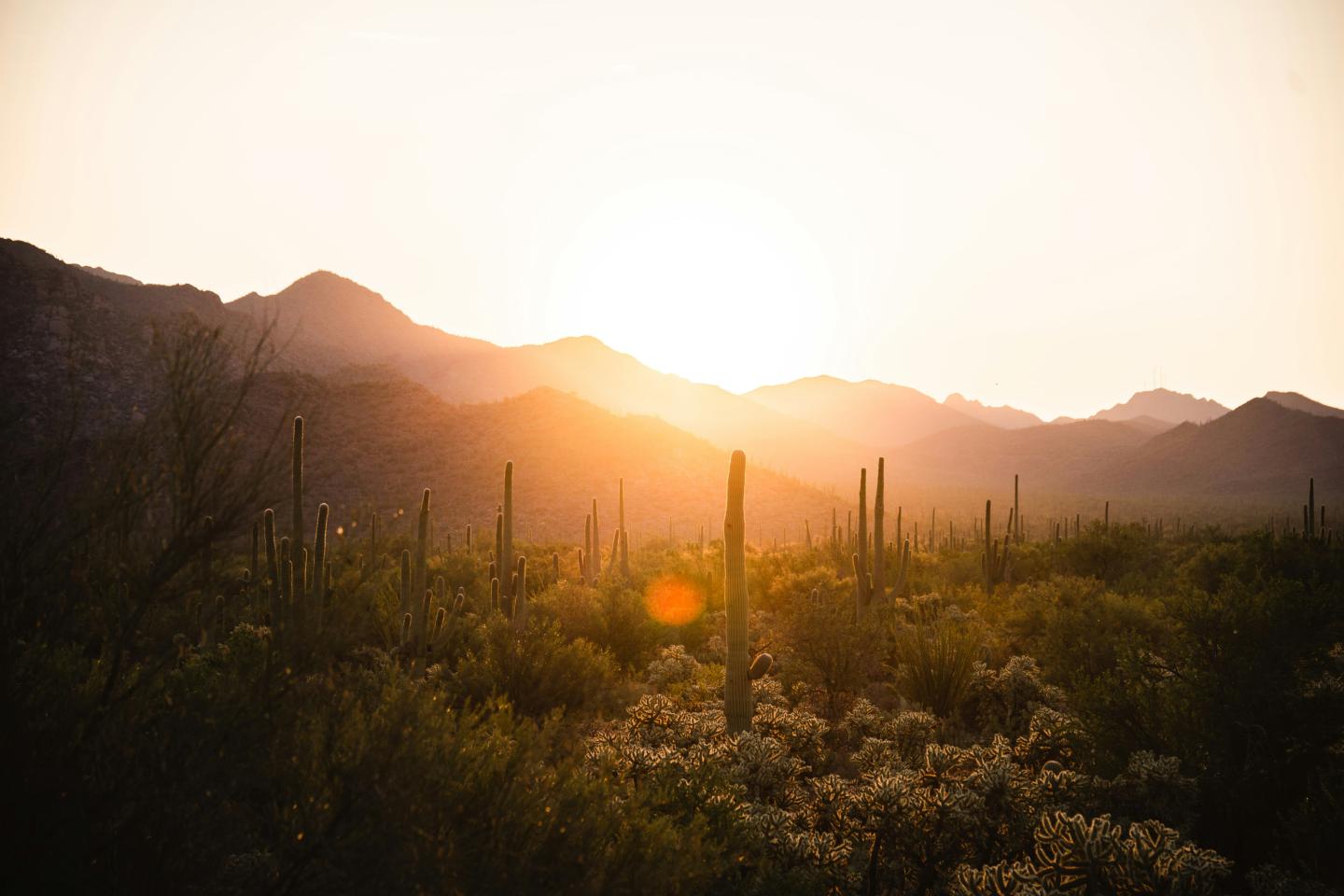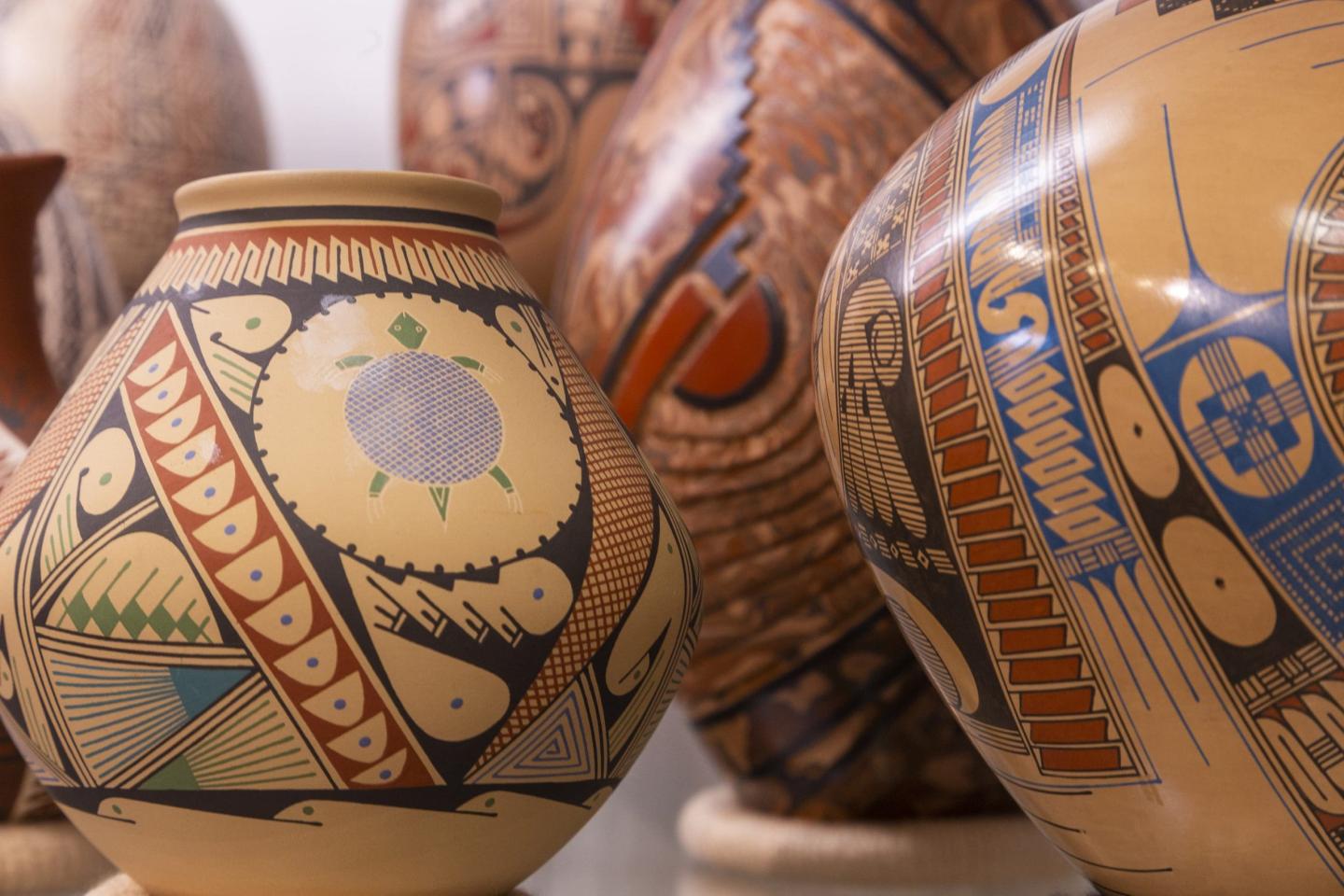
Detailed History
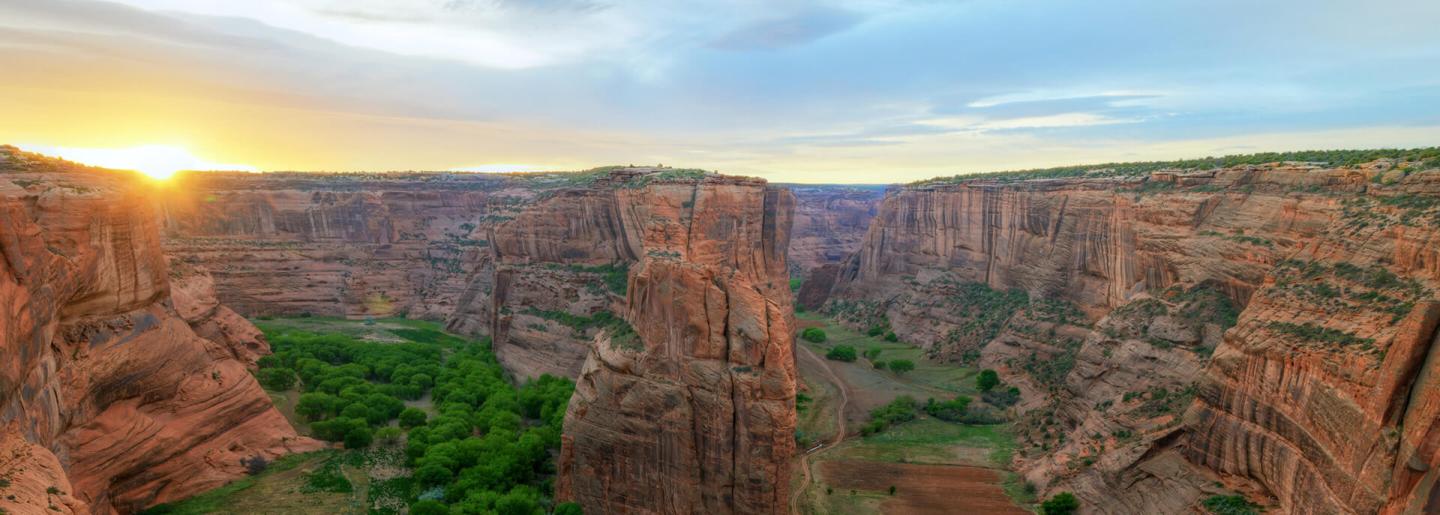
TOWARD PUBLIC UNDERSTANDING OF THE NATIONAL PARKS: The First Seventy Years of Western National Parks Association
Western National Parks Association began with $234.50 and the dedication of Dale King. Remembered as a brilliant, talkative idealist, King started his career with the National Park Service in 1934 as a junior park naturalist assigned to the Southwest Monuments Group at Casa Grande. Under Superintendent Frank Pinkley, the Group administered the scattered, remote national monuments of Arizona and New Mexico.
In the midst of the depression, NPS budgets were extremely limited. Said Pinkley in a 1937 report:
This is the first time in my thirty years of government that we have had to guess our way through a quarter of the year before we actually knew how our funds stood. . . . We knew by June how much Congress was going to give us. . . . A month later we knew we were only going to get 90% of that allotment. . . . Then came the saddest news of all . . . . another slice had been taken out of our money to finance the new Park Service Regional Officers salary.
About the only satisfaction we can dig out of this situation is that when it came to making real savings; to making both ends meet without any red ink; to making one dollar do the work of three; to doing without necessities; they certainly came to the right outfit when they came to us! Going without isn’t one of the sports we are fondest of, but we happen to know a lot about it!
The Casa Grande staff frequently gathered in Pinkley’s garden after work to talk about the NPS mission. On several occasions, Dale King advocated the idea of a “cooperating association” as a possible solution to staff and funding shortages. Similar associations had already been established at Yosemite and Grand Canyon national parks to supplement personal interpretation with publications and exhibits.
King envisioned offering free and modestly priced publications to visitors. Proceeds would go into a fund to pay for more publications, or to purchase reference books and other materials to support the interpretive efforts in the Southwest monuments. At first, Superintendent Pinkley questioned the idea of printed rather than personal interpretation (The merits of “passive” versus “active” interpretation are still debated.) He was also uncertain whether the National Park Service could legally accept assistance from a non-government organization. In 1936, a NPS review of associations resulted in specific, legal provisions for their operation under the 1937 Interior Appropriations Bill. Pinkley, a practical man determined to maintain interpretive services, relented and gave King permission to establish an association.
King was confident even with no capital to start the enterprise. He promised prospective members a 1 percent discount on future association publications for each dollar they invested, and by the end of 1937, thirty-five people had contributed $234.50.
King then saw to the appointment of distinguished Boards of Directors and Advisors, in order to have leaders in academia, publishing, and the National Park Service guiding the fledgling venture. The first Board was composed of Dr. Harold Colton, John Fast, Dr. Harold Gladwin, Dr. H.P. Mera, Reverend Victor Stoner, and Frank Pinkley. Serving on the Advisory Board were Dr. Emil Haury, Jack Whitehead, Dr. W. W. Hill, Dr. Edwin McKee, Dr. Howard Gloyd, J. H. Tovrea, Lyndon Hargrave, and Dr. Leslie Spier.
Anyone familiar with the natural and human history of the Southwest will recognize the outstanding achievements made by this group in their various fields in the years to come. Their enthusiasm and expertise were to sustain the Association as well.
On July 22, 1938, the organization became official: the Secretary of the Interior gave permission for the Southwest Monuments Association (SWMA) to commence activities as:
….a nonprofit organization pledged to aid the preservation and interpretation of Southwestern features of outstanding national interest.
The logistics of setting up an operation to serve the widespread Southwest Monuments Group would have daunted almost anyone, but Dale King did it “after work.” Dr. Emil W. Haury remembers King:
Full of vim and vigor! He was dedicated to making the Association go because, well, he had ideas. He was an enterprising young fellow.
With the help of a young administrative clerk named Luis Gastellum (who would later become Assistant Director of Operations for the NPS, and serve as SPMA’s chairman of the Board from 1982–1985), King developed ordering, delivery, inventory, and accounting systems for eighteen remote parks. He and Treasurer Mildred Dodge also volunteered their own time to take care of the bookkeeping.
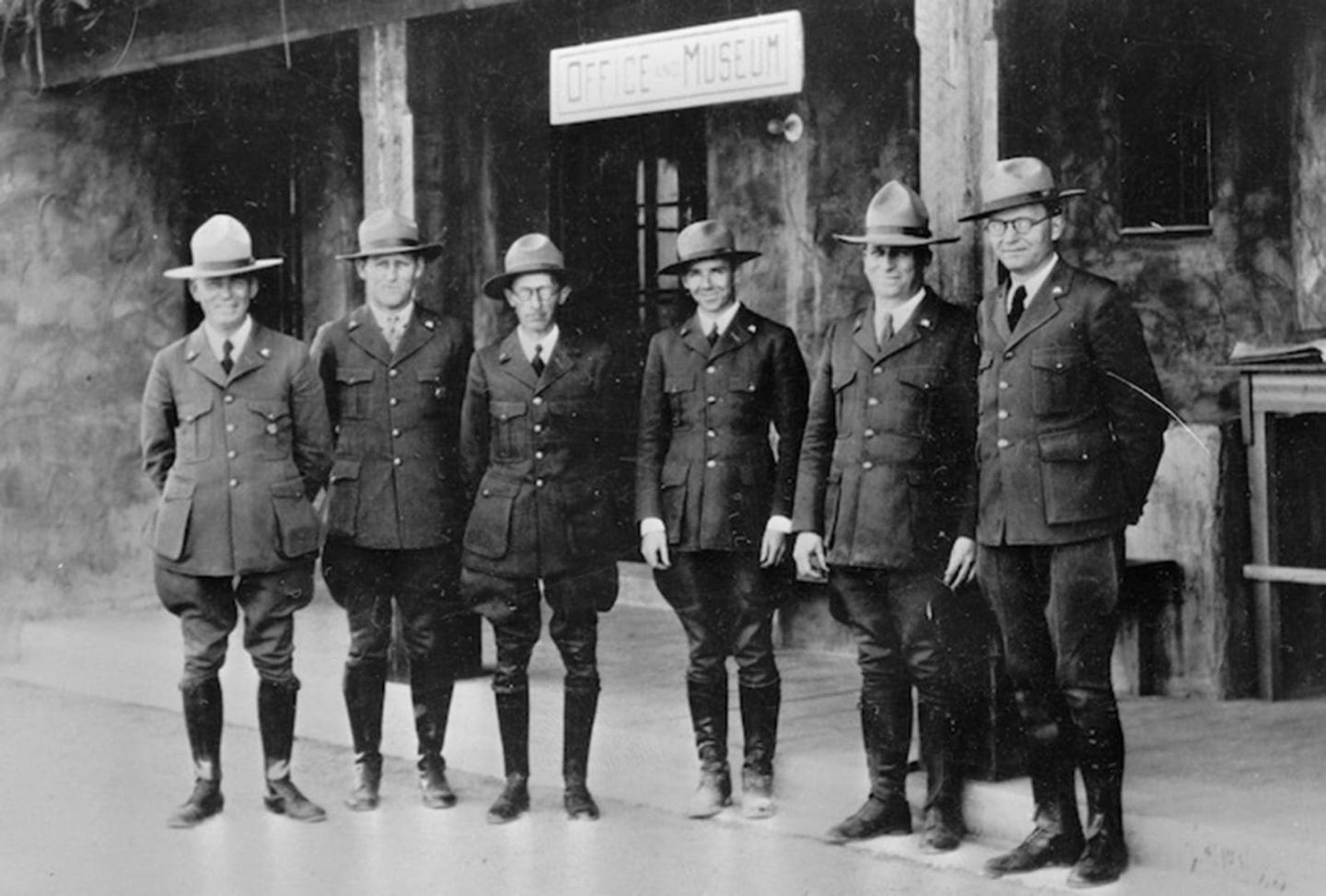
The Boards of Directors and Advisors did not find it practical to meet every year. Travel, even from Tucson to Casa Grande, was expensive and time consuming in the late 1930’s. Correspondence took the place of meetings, and Board of Directors and the Board of Advisors merged, and Drs. Edwin Mckee and Emil Haury served on the new Board of Directors.
In 1940, Luis Gastellum performed the first audit of the association, recommending that a few procedures be added to those he had suggested at the beginning. But already, SWMA was solvent, able in its first eighteen months not only to publish but to donate to interpretive programs. The Guide to Southwestern National Monuments was that first publication of the new association and it continues today as a perennial best seller, albeit in updated form. The achievements were all the more remarkable considering that the cooperating associations were a new concept with few precedents or guidelines. In the first annual report issued in 1940, King remarked on the value and purpose of the association, one which has changed little in seventy years.
A word concerning the value of the association may not be amiss. When the organization was started the Executive Secretary understood but vaguely the real, active demand by the public for accurate informational material. He, and his colleagues, wished to satisfy that demand. But they did not realize…each good publication which is sold to a visitor constitutes a permanent “contact” which …is repeated and renewed with an unpredictable number of unknown persons in addition to the original buyer. We have received numerous mail requests from…persons who have never visited a park or monument. They wanted information because they became aware of it in another person’s library. Their interest was stimulated and aroused. Such lasting effects must be valuable. Surely this is interpretation, and good interpretation.
The association suffered greatly in 1940 with the death of Frank Pinkley.
World War II affected the association as it did every aspect of American life. Certainly, few people were taking vacations, and because of gas rationing not many of those were traveling to the national monuments in the Southwest. As a result, SWMA’s revenues and activities slowed temporarily. Dale King and many other rangers joined the military. During King’s three-an-a-half year absence, Park Naturalist Natt Dodge supervised SWMA. Dodge was a very talented naturalist, a scholarly man who was a keen photographer of desert flora and fauna. He believed in the importance of the association, and maintained its vitality through this challenging period by implementing the procedures recommended in the 1940 audit. Business was quiet, but after the Internal Revenue Service declared gifts to the association tax-deductible in 1942, Dodge requested that the Board of Directors hire a treasurer to give full-time attention to the increasing complexities of the association’s accounts.
As an economy measure, in 1942 the Southwest Monuments Office moved to Santa Fe, New Mexico, to consolidate with the NPS Regional Office there. SWMA moved there also, and on July 13, 1943, received its Certificate of Incorporation in the state of New Mexico.
In December, 1943, a fortuitous gift of $1,000 put SWMA “in splendid financial condition”. As printing was curtailed due to wartime restrictions on paper and printing, Natt Dodge prepared publications for the day when circumstances would return to normal and visitors would once again seek interpretation of the parks. Optimism and the anticipation of visitor needs characterized the association’s management during this difficult period and were essential to its future success.
Dale King returned from the war in January 1946, brimming with new ideas and excited about the potential of SWMA. Although Depression-era funding shortages belonged to the past and the monuments were adequately staffed after the war, the association still had a vital, even an expanded role in supplementing park interpretation. In the few years since its inception, SWMA had proved its importance in overcoming not only financial barriers, but other, unforeseen obstacles.
Publications and donations could be provided through SWMA by means of procedures far less rigid and time-consuming than those of the Federal government. There was no distance between interpretive need and the association; no elaborate justifications were needed.
The association’s success in responding to the needs of visitors became obvious from its revenues. Sales in 1947 surged to over $10,000 from the previous year’s total of $3,248. As revenues continued to climb under their management, Dale King and Treasurer Al Vedder became ex-officio, voting members of the Board of Directors in 1950.
In 1952, the National Park Service re-established the Southwest Monuments Group office and located it at Gila Pueblo in Globe, Arizona. SWMA also moved its office to Globe, where they were to remain for the next thirty years. Despite moving expenses, the association made more free publications available and donated more money than it had in any previous year. Sales were up over the previous year by about 50 percent, to $34,000. The following year, the Board of Directors voted to act henceforth in an advisory role to the Executive Secretary rather than in a managerial capacity. At the time, the decision was not unusual, as many cooperating associations were virtually indistinguishable from the NPS in terms of management, facilities, and of course, purpose.
Conservative, but satisfying, steady growth characterized the next five years. More areas were added to those already served by the association, and basic publications were produced for many of the parks. This period of careful management built confidence in the integrity and reliability of SWMA, and NPS areas grew to depend on the Association for publications and donations.
As of June 30, 1957, the National Park Service again terminated the Southwest Monuments Group Office, and almost all of the staff was divided between Tucson (the Western Archeological Center) and the NPS Regional Office in Santa Fe. Dale King decided to leave the Park Service altogether to start his own publishing venture. Earl Jackson was the only member of the NPS interpretive staff to stay in Globe, so that he could supervise the interpretation of NPS areas in southern Arizona. SWMA’s headquarters remained at Gila Pueblo as well, and Jackson assumed the position of Executive Secretary of the association. He had been closely involved with SWMA since joining the National Park Service in 1934. He had used its publications in his work, and had also authored a number of them. As part of the Southwest Monuments Group interpretive staff, Jackson had helped areas develop trail guides, reviewed and edited proposed publications, and checked sales outlets to be sure they were stocked with appropriate items.
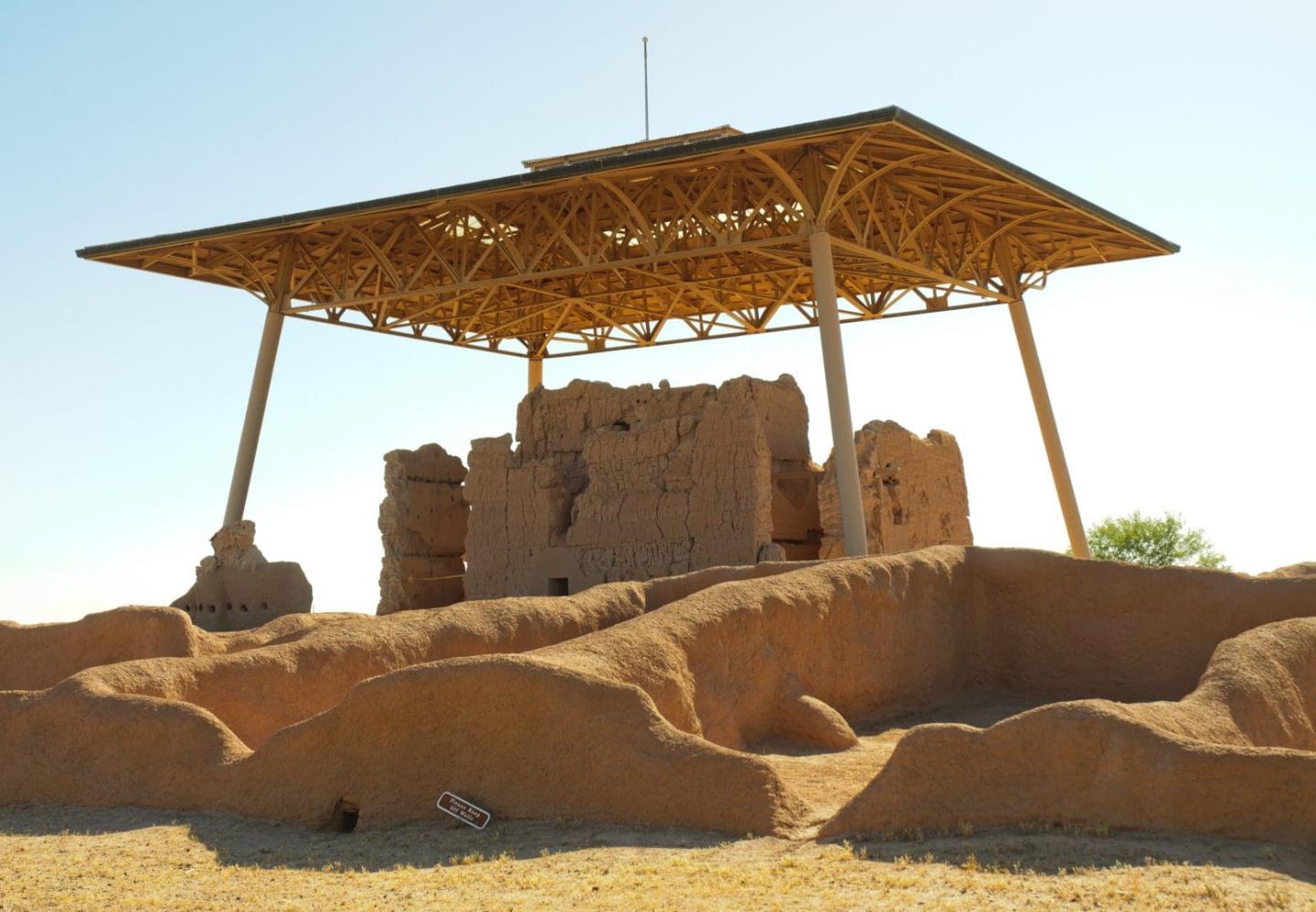
Former NPS Chief Historian Bob Utley remembers:
The late 50s and early 60s were a time when associations were fairly conservative, very small, and prepared their own publications. I remember it as a time of laying the groundwork for the great years that were to come later. You can’t really compare SPMA now with what it was then. It was so much smaller. It was a one- or two-man operation. Earl Jackson was SPMA.
The postwar popularity of the national parks led NPS planners to initiate “Mission 66”, a ten-year plan (1957–1966) to upgrade and expand NPS facilities. Every park was to have a visitor center, which incidentally, would provide a location for an association sales outlet.
Interpretive programs and publications were to receive increased emphasis as well. SWMA responded eagerly to the challenge. By 1962, sales had reached $72,000, donations totaled $6,000, and publishing proceeded at a brisk pace. The association, which had now been serving visitors for twenty-five years, continued to affiliate with more parks and even assisted the U.S. Forest Service. Jackson reported:
We here at SWMA headquarters are proud of the past, but do not plan to glory in it. We are girding for the next twenty-five years, years in which the association can extend more and better service to the National Park Service and its areas in the Southwest.
In 1957, Dr. Ned Danson, then Assistant Director of the Museum of Northern Arizona, was on the Advisory Board of the National Park Service. He proposed that the NPS take over historic Hubbell Trading Post on the Navajo Reservation. The Park Service carried out a sturdy, which found Hubbell to be of national historic significance, and Representative Stewart Udall introduced legislation to designate Hubbell Trading Post as a National Historic Site.
The proposal was controversial. Many in the National Park Service as well as in Congress could not imagine a trading post in the system. It did not fit in with the historic sites, most of which were battlefields and historic houses. Nonetheless, in 1965, the third time it was introduced, the legislation passed.
When asked by Congress, how the National Park Service intended to manage Hubbell, NPS Director Hartzog replied that it would be run as a “living trading post”. This statement went on the record and committed the NPS to manage Hubbell as a commercial enterprise, which the government itself could not do.
The Park Service invited concessioners to submit proposals for the operation of Hubbell, but the response was tepid. There was little enthusiasm among concessioners for the old trading post. The Southwest Monuments Association was approached with the idea. Would they operate the trading post in the same way it had been managed by generations of the Hubbell family? SWMA agreed to take on the task and Hubbell Trading Post National Historic Site became an affiliate in 1967. To their good fortune, the first trader, Bill Young was an excellent manager. He had been a trader on the reservation since 1920, know the business well and spoke Navajo.
Within a few years, Hubbell’s addition to the gross income of SWMA was significant. A large percentage of the revenues generated at the trading post went back into operating it—for salaries, housing, utilities, and maintenance—but other parks in SWMA benefited also.
More to the point, Hubbell Trading Post remained a unique experience for the visitor, a place to learn about the westward expansion of America in an engaging, fascinating manner. In operating Hubbell as continuing, uninterrupted “living history,” the Association also helps to preserve the traditions of the Navajo people who trade there.
Earl Jackson retired from the National Park Service in 1966, planning to pursue his lifelong interests in writing and natural history with his wife Betty. At the suggestion of NPS Southwest Regional Director Dan Beard, he agreed to continue managing the association for as many hours per week as needed to keep it running smoothly. He also served as general editor of the publications program. Soon, the association’s rate of expansion led to his working full-time, as the Executive Director of SWMA.
SWMA reincorporated in 1970 as Southwest Parks and Monuments Association, since the areas it now served included national parks as well as monuments. Its role expanded during the 1970s along with the growing popularity of national parks and national concern for environmental issues. By 1972, SPMA was serving 37 parks, in the Western, Southwest, Rocky Mountain, and Midwest regions of the NPS. Revenues that year were over a third of a million dollars.
During this time, a population explosion was taking place in the Southwest. In Arizona alone, the census jumped from 1 ¼ million in 1960 to 1 ¾ million in 1970, and was to leap to a million more by 1980. SPMA’s business and staff grew with it. Quaint Gila Pueblo had long been inadequate for SPMA’s offices and warehousing, and in 1974 the association constructed its own facilities in Globe.
The long, harmonious partnership between cooperating associations and the NPS, though based on specific legislation and federal guidelines, was informal. In 1974, the Department of the Interior recommended that memorandums of agreement be negotiated with each cooperating association and the associations maintain distinct management authorities.
SPMA entered the 1980s as a large and growing business with areas in nine states and four NPS regions. In every respect except its mission, the organization had changed dramatically since its inception. The Board of Directors requested Luis Gastellum, who had conducted the first audit of the association in 1940, and Harthon Bill to review association policies and procedures in light of these changes and with regard to revised NPS directives. Earl Jackson announced his retirement in 1981 to return to his original interests in natural history and writing.
The Board of Directors selected Tim Priehs, formerly the Publications Director of the Grand Canyon Natural History Association, to succeed Earl Jackson as Executive Director. In November of 1981, the Board of Directors counseled major policy and procedural changes that would be implemented over the next five years.
In 1982, the Office of the Inspector General of the Department of the Interior reviewed five of the largest cooperating associations, including SPMA. All were judged excellent examples of private sector support of public programs. Historian Bob Utley:
When you come right down to it, the associations are really good things. They are good for the parks, they are good for the Park Service, they are good for the traveling public, and they are cost-effective.
SPMA’s complete revision of its articles of incorporation in 1984 and of its bylaws in 1985 brought the organization into full compliance with evolving NPS policy. Within this framework, SPMA stood as an independent, tax-exempt corporation that worked closely with the NPS to ensure that its contributions to interpretation and scientific research effectively serve national park visitors.
In 1983, SPMA purchased an adobe building in El Presidio Historic District in downtown Tucson. With the help of historic preservation grants, the former maternity hospital, known locally as the Stork’s Nest, was restored and the association relocated its offices from Globe in 1984. The SPMA warehouse remained in Globe, storing the organization’s growing collection of park-related publications. The new location allowed the association to open a small sales outlet, the Bookshop.
SPMA celebrated its fiftieth anniversary in 1988. The scope of the association had expanded remarkably in fifty years, to include partnership with 48 NPS parks, gross sales exceeding $4 million, an award-winning publishing program, and grants to support scientific research in parks. Donations to the park service exceeded $500,000 annually and included such items as purchase of interpretive equipment and displays, support for Student Conservation Association interns, and printing of dozens of site bulletins and other handouts. SPMA had more than fifty employees at parks, managing the bookstore operations and assisting with visitor contact services.
The 1990s saw transition as the National Park Service wrestled with budgetary challenges, rapidly developing technologies, and demographic change and its effect on park visitation. SPMA responded with innovation in the array of products it produced for sale to visitors. Posters, videotapes, and note cards were introduced early in the decade, and the scope of publications widened to new topics like Indian arts and field guides. Later the association introduced a series of park logo items to great success. By the turn of the century, visitors at SPMA-affiliated parks could choose from an ever-expanding array of items that helped tell the story of that site, whether historical item replicas and foods or movies, music, and t-shirts featuring a colorful park logo.
With the expansion of products and services came the realization that current facilities were inadequate to future growth. The SPMA warehouse in Globe was nearing capacity, and the growth in headquarters personnel had already necessitated closure of the Bookshop store in 1995. The Board of Directors began a search for a possible relocation site in 1999, settling on a parcel in northwest Tucson. Construction of the new facility began in 2001. Work also began on a formal strategic plan, also led by the Board, to outline policy and procedure for the next five years.
Completed in early 2002, the 16,000-square foot headquarters incorporated the association’s administrative, publications, and marketing offices under one roof with the warehouse operation, now relocated from Globe. It also housed a flagship retail store and presentation room, which quickly became the site of a regular and lively calendar of special events and presentations, helping to spread the message of the organization’s support for the National Park Service. It also allowed, for the first time, the addition of volunteers dedicated solely to the association, whose donation of service contributed to further the association’s mission.
The headquarters move also marked another significant change: in 2002 the organization became Western National Parks Association (WNPA). By this time the association was affiliated with sixty-two parks in eleven western states. Annual sales were nearing $9 million. Donations to the NPS were more than $2 million per year.
In 2003 the Board of Directors selected LeAnn Simpson, formerly the Executive Director of the Glacier Natural History Association, to succeed Tim Priehs as Executive Director/CEO of WNPA.
The newly created Sand Creek Massacre National Historic Site became the 66th and latest partner of WNPA, in 2007. Affiliated parks ranged across the West. They preserved and protected sites of great variety, from battlefields and forts to ancient dwellings and areas of great natural beauty.
In 2011 the Board of Directors named James E. Cook, formerly the Operations Director of the Arizona Chapter of the Nature Conservancy, to succeed LeAnn Simpson as Executive Director/CEO of WNPA.
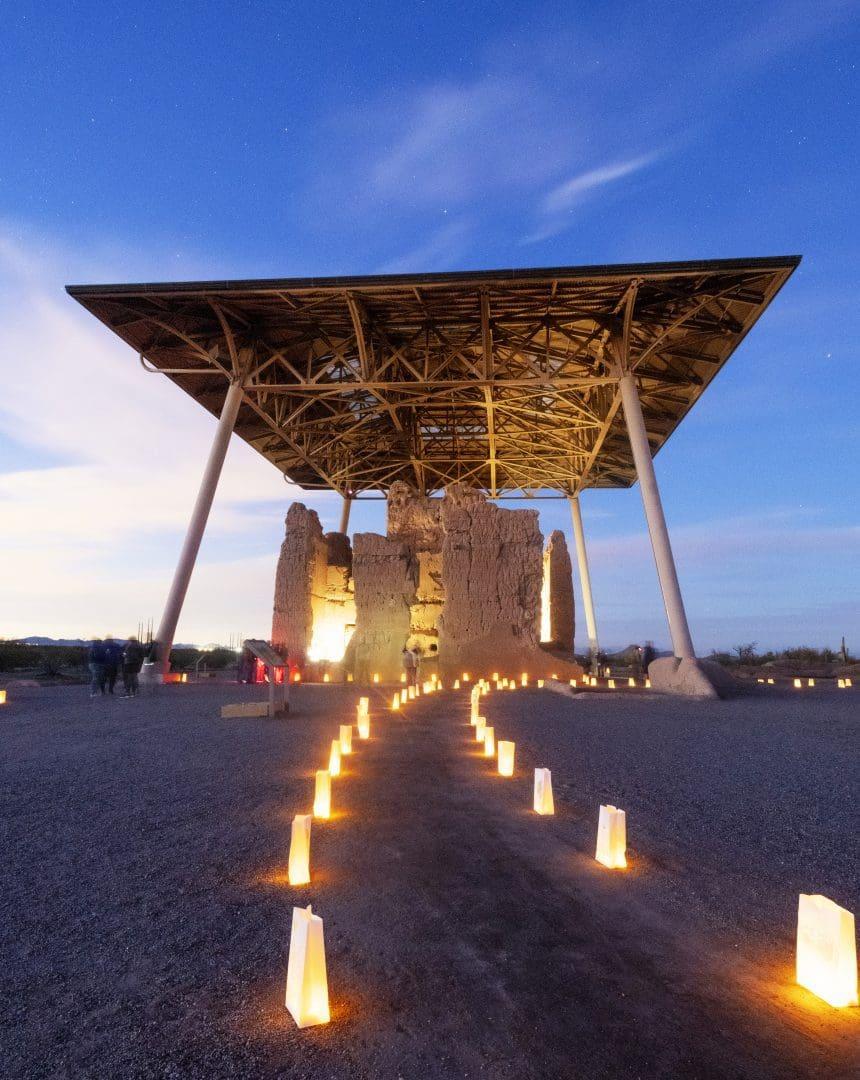
Publications and Products
At first, publications on the national monuments were simply not available from any other source. Beginning with the modest goal of supplying a minimum level of accurate information, the association’s role in providing written interpretation has grown to establish WNPA as a mainstay of southwestern publishing. It is difficult to imagine interpretation of the parks without WNPA publications.
Dale King set up the publishing program on two tracks: a “popular series” intended for the average visitor, which was based, in part, on more detailed information covered in a “technical series” of scientific reports. The latter were to be printed as a service to academia, researchers, and Park Service professionals. Dr Bernard Fontana:
I majored in anthropology. You couldn’t do anything in any serious way having to do with…the prehistory of the region… without running into SPMA publications. I’m thinking of the…technical series… Those were standard fare in Southwest archeology…
In 1938, SWMA pledged to serve eighteen national monuments, all of which needed interpretive publications. For this reason, SWMA’s first publication, the fifty-page Guide to the Southwest National Monuments (Popular Series #1), contained interpretive summaries of each of the monuments in the Southwest. It was produced in December 1938, with the help of a $180.00 loan from the Grand Canyon Natural History Association. It sold well for those days, going through two printings totaling 3,000 copies in two years. Next, Technical Series #1, The Prehistory of El Rito de los Frijoles, Bandelier National Monument, was issued in 1940, the year of New Mexico’s Coronado Cuatro Centennial Celebration. A record number of visitors eagerly availed themselves of this relatively detailed book, assuring its success both financially and as a tool for interpretation.
Dale King was an imaginative yet realistic person. He recognized before he left for WWII that it would be difficult for the association to publish during the war. At the same time, he was aware that SWMA’s continued support would be vital to sustaining interpretation. King negotiated a creative arrangement between SWMA and Arizona Highways magazine. This periodical, published by the state of Arizona, was financially secure and had a well-established publishing cycle. King commissioned a series of articles on Arizona’s national monuments to be written by NPS rangers on their own time. These would be illustrated and printed in successive issues of the magazine. The Prescott Courier would underwrite the printing of several thousand extra copies of each article, which would be stored, then compiled and bound once all of them had been published. The association would have a fine publication without the expense of typesetting, illustrating, or making the printing plates. The project overcame many practical obstacles to be published as Popular Series #2, Arizona’s National Monuments. Although Natt Dodge and the editor of New Mexico Magazine agreed in 1944 to do a similar series on New Mexico’s national monuments, and the articles were assigned to various NPS naturalists, the printer was compelled to hold the work until his shop could be fully staffed after the war.
During the war, the association could produce only the simplest, Multilithed material. Reluctantly, Natt Dodge decided that two manuscripts, Poisonous Dwellers of the Desert and Montezuma Castle Textiles, would be “held until after Victory.”
Upon his return from the war, Dale King outlined an ambitious publishing program. Association-funded trail guides began to appear at many of the monuments in the late 1940s. Al Schroeder at Montezuma Well wrote a trail guide for “the Well.” The idea caught on, and other rangers began producing booklets specific to their areas. They wrote and typed the texts, which were then mimeographed at SWMA expense and sold for a nickel or a dime. The proceeds went into a revolving fund to print more guides.
Publications of a more specialized nature, but of considerable merit, have been made possible by the Association. In 1946, Southwest regional archeologist Erik Reed conceived the idea of publishing a collection of articles on anthropology in honor of the pioneer southwestern archeologist Dean Cummings. These articles were to be written by Cummings’s former students to acknowledge and further his profound influence on the interpretation of Southwest prehistory. (Dean Cummings had served as mentor to many, including a young archeologist named Emil Haury.) SWMA provided the technical and financial assistance which enabled For the Dean to be published.
Poisonous Dwellers of the Desert, written by Natt Dodge before the war, was sent to the printer in 1947. The title piqued the curiosity of visitors to desert areas and immediately became a bestseller. It still sells well after sixty years, as does Dodge’s Flowers of the Southwest Deserts, a book that also filled a niche it still holds today.
It is largely through these popular publications that the general public has become aware of the work of the association. In the early years, the authors of association publications were usually park naturalists. They were the ones most familiar with the features of their often remote areas and with the questions visitors had about them. They were not necessarily writers, however, and King and his staff, including Les Arnberger, Al Schroeder, and Earl Jackson, spent many hours reviewing and editing their work. Today, the association draws on a wider pool of talented authors, photographers/illustrators, designers, and printers than ever before.
The Southwest Monuments Group interpretive staff began to emphasize publication production in the 1950s. Dale King hired artists to design the covers of trail booklets, and edited the contents carefully in order to bring them “in conformity with emerging standards.”
The environmental movement of the 1970s increased the public’s interest in natural history publications. At the same time, new technologies in production and printing, and an increased emphasis on graphic design, dramatically changed the appearance of books. In 1975, SPMA published Great Sand Dunes, The Shape of the Wind, written and photographed by Stephen Trimble and designed by Christina Watkins. Its combination of skillful language, dramatic photography, and elegant design marked the beginning of an era of sophisticated publications produced by SPMA and other cooperating associations.
But increasingly sophisticated production created a dilemma for the association. A fundamental objective is to get accurate information in the hands of as many visitors as possible at the lowest cost. While professionally produced publications are more likely to arouse the visitor’s interest they also cost more than products designed in-house. The quality of illustrations, design, and printing, add to the expense, but also to its marketability and hence its interpretive impact.
As SPMA entered the 1980s it continued the tradition of producing fine publications and an even greater emphasis was placed on using professional authors, illustrators, and graphic designers. The association issued a landmark publication in 1983, Those Who Came Before: Southwest Archeology in the National Park System by Robert and Florence Lister. It filled the pressing need for a comprehensive yet popular treatment of southwest archeology and signaled a renewed commitment to regional publishing. The book was a critical and financial success.
The 1990s demonstrated an even greater need for SPMA’s expertise in producing interpretive materials. The National Park Service found itself contending with a web of problems. Decreases in park budgets led to reduction in interpretive staff. Fluctuation in park visitation reflected the demographic changes in American society as a whole. And, the technological revolution in information content delivery meant the entire process of delivering content to visitors could radically change.
SPMA responded by widening the breadth of its services and products. The idea of getting park information into the hands of visitors remained, but the method of delivery changed. Posters and note cards were among the first “non-book” offerings. The topics of books widened from park-specific ones, to include broader themes of western history and ancient cultures. Emphasis continued on high-quality content and design, to ensure SPMA’s books stood out on the shelf. Work began on marketing the association’s books to outside concerns, whether other cooperating associations or the book trade in general.
Other products were also successful. Evolving theories about the nature of interpretation had led the NPS to relax rules on what types of products were considered to have interpretive value – no longer would books be considered the only vehicle for delivering a message. Videocassettes, music CDs, software, and other non-book products began appearing on visitor center store shelves. In 1998 the association undertook development of a park logo program. The colorful logos were reproduced on an array of items including patches, lapel pins, magnets, t-shirts, ball caps and more. Other successful non-book WNPA items included a companion film to the book Those Who Came Before, a children’s stacking block set, and Junior Ranger vests, hats, and backpacks.
By 2010, a glance at the WNPA Product Catalog revealed a wide variety of association-produced interpretive material – more than 700 items in total. Sale of these products contributed over $2 million in gross sales annually. The commitment to high quality in design and production has been recognized: since the mid-1980s the association has received dozens of awards honoring its work in publishing from such organizations as the American Association of Museums, the Association of Partners for Public Lands, the Border States Regional Library Association, Foreword magazine, the Arizona Book Publishers Association and others.
Impressive as these awards are, Dr. Bernard Fontana describes the association’s most significant achievement: “When you look at the things that [WNPA] has published in total, I don’t think there’s any question but what it had an enormous impact on public understanding of the parks.
Persistence and dedication to excellence in interpretive publishing have led to the eventual realization of King’s comprehensive plans for free and reasonably priced, basic and advanced publications, covering all areas and subjects.
The Donations Program
[WNPA] is part of the whole philanthropy movement in the United States . . . and to advance the purposes of the parks at the same time that you’re putting money into the parks is a dimension of the story that is not generally known to the public. . . . The people that you employ are not making huge salaries, and the people who constitute your Board of Directors are doing this as a volunteer activity. And it’s all in the pursuit of a very worthy public purpose.
—Robert Utley
Initially, SWMA donations to the National Park Service were narrowly focused. Cooperating associations were a new idea, and their possibilities were just beginning to be explored. Donations in the early years funded items, many of them relatively small, that could not be purchased because of budget limitations or that were difficult to obtain through the government procurement system.
After eighteen months in operation, the Association had grossed $2,091. A total of $160, or nearly 8 percent of gross, was donated back to the monuments. These donations included subscriptions to professional journals, publications offered free to the public, insurance on a suit of Spanish armor on exhibit at Tumacácori, and $1.46 for birdfeed to supply the bird-banding station at Casa Grande Ruins.
During World War II, SWMA was able to make few donations, but proved that small donations could be critical. An SWMA gift of $20 made it possible for the NPS to purchase a tract of private land at Chaco Canyon National Monument in 1944. The money paid incidental costs not covered by the original government appropriation for purchasing the land. SWMA was later to assist in the acquisition of additional land, containing significant resources, in several parks and monuments.
The association is also able to accept donations, without the restraints usually place on the NPS, and sometimes under unusual circumstances. From a 1946 report:
On April 11, 1946, the Association received a donation of $75 from Dr. Harold S. Colton of the Museum of Northern Arizona through Custodian David J. Jones of Wupatki National Monument. This came about in an interesting manner. In 1933-34 Dr. Colton had donated to Wupatki the materials for a cook shack used by the CWA program. For years it was used as a storage room, then Dr. Colton told Mr. Jones to dispose of it in any way which would benefit the monument. Jones gave the lumber to local Navajos with the understanding they would weave a rug in exchange. The rug went on sale during the war and fetched the surprisingly high price of $75.00.
The association may also legally accept and disburse donations which are intended for specific projects. This advantage was discovered early in WNPA’s history. In 1947, the association processed a $1,000 donation for experiments with ruin stabilization techniques at NPS archeological sites, and $150 from private sources which purchased an acre of land at Aztec Ruins where a great kiva recently had been discovered.
Certain other restrictions do not apply to WNPA. As Dan Murphy explains:
A while back at Canyon de Chelly, the interpretive program involved having Navajos build a Hogan . . . for display to the public. (The belief) among Navajos is that the hogan would not be functional until there was a Blessingway Ceremony… Well, you just try to get $300 from the Federal Government to pay a medicine man and see how far you get! [WNPA] said, “Fine, that’s a reasonable project.”
Interpreters may be much more creative with WNPA’s help. Audiovisual equipment, curatorial supplies, and exhibits can be readily provided by the association. When the necessarily complex system of allocating federal money delays or denies initial funding of worthwhile, imaginative programs, the association can provide critical grants.
By the 1980s, the growth of the donations program necessitated the institution of a formalized donations policy and an annual donations budget cycle. The myriad applications for funding were prioritized and examined for merit with the full participation of the National Park Service. However, donations were still allocated based on the philosophy articulated by Dale King in the association’s early years:
. . . member areas contribute according to their ability, but share relatively according to their current and predictable future needs as compared with those of other participating areas. Even a little thought will prove this a sound policy. An area’s travel or sales totals have nothing to do with its needs for Association funds. We have always felt our donations must be opportunistic in that we should “strike irons that are hot.”
WNPA donations continue apace. Recent contributions include support for technology improvements for webcams at several parks, cultural demonstrations and living history presentations, night-sky programs, and historical music concerts. Parks value the association’s ability to fund educational programs and activities not supported by federal budgets.
Competent scientific research is essential to the interpretation and management of areas having natural or cultural significance. And yet, for most of the history of the national park system, funding for scientific research has taken a low priority. From a humble beginning of supplying birdseed at Casa Grande Ruins in 1938, WNPA projects ranging from faunal and floral population surveys to the reintroduction of the Kemp’s ridley sea turtle at Padre Island National Seashore; from remote sensing archeological surveys at a number of parks to community-based collection of oral history of Hopi settlement at the Keet Seel cliff dwelling of Navajo National Monument.
Following a policy that emphasizes the collection of “baseline” data, WNPA research grants focus on a better understanding of primary resources in the parks. Emphasis is also placed on the degree to which the research will contribute to the parks interpretive program.
WNPA has continued to find creative ways to fund interpretation and research. Another avenue was established during the 1980’s when SPMA worked with park service areas to obtain grants from the National Endowment for the Arts, the National Endowment for the Humanities, various state and local agencies, and major corporations. Numerous grants have funded interpretive and research projects that were beyond the scope of the Association’s budget.
At present, WNPA’s support of the NPS is more than $4 million annually and cumulative donations have exceeded $59 million. In many parks, personnel and fiscal resources are stressed and Western National Parks Association has increasingly become a critical link in quality interpretation.
By Susan Lamb



